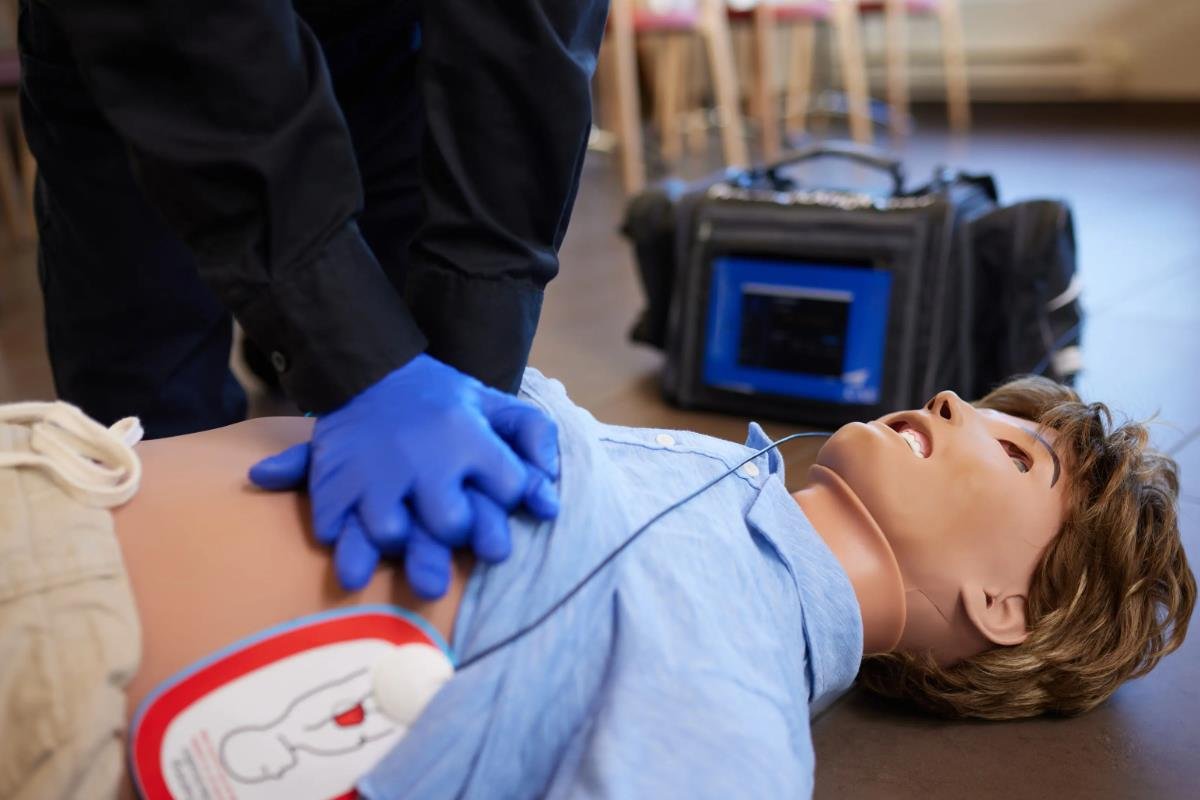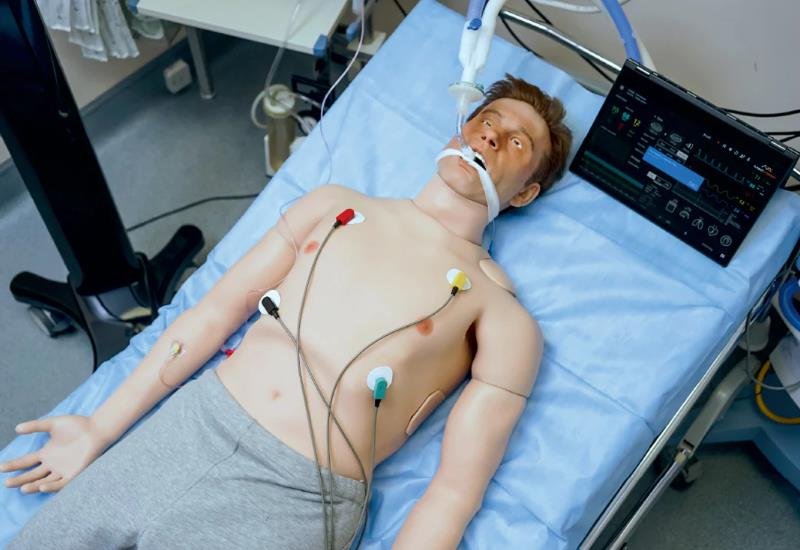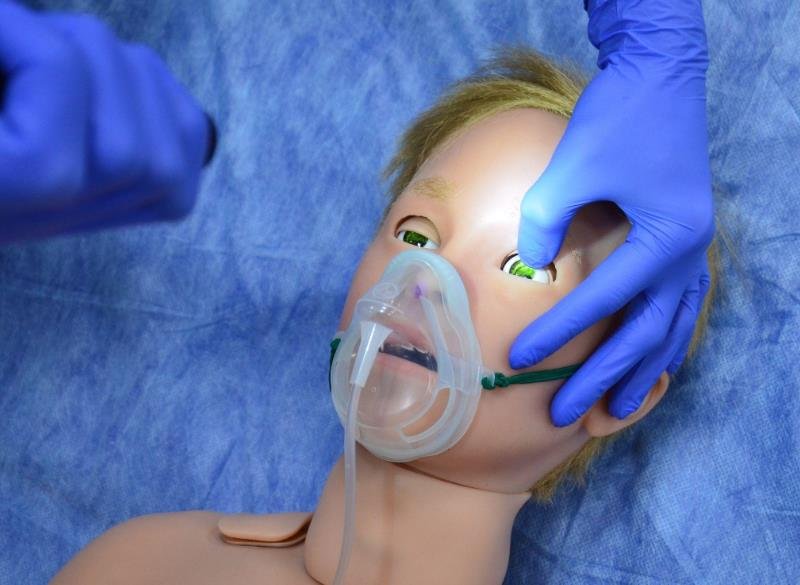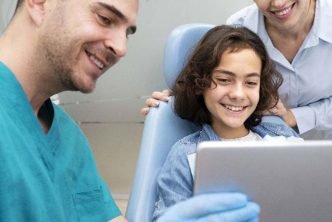Because simulation training mimics real-life scenarios and allows students to learn, practise, and assess their medical skills in a safe setting, it significantly reduces the likelihood of accidents occurring in practice when healthcare staff are not properly trained. Simulation training gives medical students an immersive, hands-on learning experience without any risks to patients.
This type of training involves simulators which are devices made to simulate every part of the human body. They usually have an electronic system that mimics motions, vital signs, and other aspects of the body. The degree to which the simulator mimics reality is known as fidelity. A high-fidelity simulation is one that accurately reproduces a real scenario, while a low-fidelity simulation does not.
A life-size infant or adult patient simulator that mimics basic human physiology, including breathing, heartbeat, and pulse, is an excellent illustration of a high-fidelity simulator. It is powered by a computer-controlled mechanical system that enables it to mimic human physiology and display symptoms and disease processes as they would be experienced by a real patient.
The high-fidelity infant and adult patient simulator models available today can respond to interventions like CPR, catheterization, mechanical ventilation and intravenous medicine with pinpoint accuracy. Some can even be programmed to simulate life-threatening scenarios, displaying realistic signs and symptoms that demand the learner’s response.
Table of Contents
Benefits of High-Fidelity Simulation

There are different fidelities: physical, psychological and conceptual. Physical fidelity is perceived by the senses. By featuring skin that feels like actual skin and body parts that react and bleed like they would in a real patient, high-fidelity simulators help elevate the degree of physical fidelity. This allows students to focus on functional fidelity while training on individual abilities.
High-fidelity simulation also introduces realistic background noises into the simulated setting. This helps increase psychological fidelity by eliciting an emotional response from the student while also raising stress levels. When all aspects of a real scenario are accurately simulated, such that it makes sense to the learner, a high conceptual fidelity is achieved.
Some of the Best High-Fidelity Simulators on the Market

Leonardo Adult Patient Simulator
With its extensive functionality and opportunity to use real medical equipment, Leonardo is a high-fidelity patient simulator that can help with even the most demanding tasks in medical education. It is easy to use, allowing learners to fully immerse themselves and challenge themselves as they put their skills to the test in time-sensitive emergency scenarios. Training in advanced medical operations, clinical team development, and patient case management are all goals of this simulator.
This training aid can be used in a variety of configurations, including emergencies and critical care, trauma, and nursing. It also has a bedside monitor with simple touch-sensitive controls and high-definition graphics. Other features include realistic airways, pulmonary aspiration, retrograde intubation, airway obstruction, chest rise and fall, needle cricothyrotomy, variable bronchi resistance, programmable pupils, and more.
Lucy Maternal and Neonatal Birthing Simulator
Lucy is a labour simulator that realistically recreates the process of a woman going through the process of labour and delivery. With its help, medical students can train how to care with a mother and her newborn safely.
Designed to provide a complete birthing experience from prenatal to postoperative delivery scenarios, the Lucy simulator features airway management, articulating arms and legs, amniotic sac, articulating baby, breech deliveries (complete, incomplete, Frank and Footling, birthing positions (hands and knees, lateral, spine), cervical dilation (6 stages), cesarian section delivery, CPR, episiotomy repair, fetal palpation, fetal suction, intramuscular injection sites, manual birthing maneuver, among many other features.
Lucy’s basic and high-quality design makes it simple to use and maintain while teaching students strategies for all levels of educator training.
Stat Baby Basic Patient Simulator
EMS and prehospital students have a great responsibility, and the STAT Baby Basic Patient Simulator is designed to overcome any hurdles they may have. It gives students some practical experience and helps them become more skilled in a range of paediatric procedures. It replicates a 9-month-old patient and allows trainees to practise critical procedures like bilateral chest tube insertion, defibrillation with adjustable shock levels, ET tube insertion, feeding tube care, catheter insertion, and more.
The package includes an IV vein replacement kit, new I/O leg bones, pneumothorax pads, an ECG simulator with defib adapters, pulse bulbs, reservoir bags, syringes, blood powder, and a compact carry bag. These extras enhance the training environment and supply the necessary equipment for accurate simulations.
Arthur Paediatric Patient Simulator

A variety of common problematic scenarios and clinical settings in pediatric care can be simulated with this tool. It’s designed to replicate a 5-to 8-year-old paediatric patient, allowing healthcare professionals to practice communicating, evaluating, diagnosing, and treating young patients. Arthur is one of the best simulators for learning about acute paediatric crises because of his many traits, which range from being a healthy, talkative child to being unresponsive and lacking vital signs.
GERi Geriatric Nursing Skills Manikin
With the help of GERI, a geriatric manikin, students can learn a range of critical skills related to effective geriatric care in hospital and nursing home settings. These skills include diagnostics, patient transfers, pericare, and irrigation. GERI can also be easily converted from a female to a male manikin by taking off the wig and inserting the provided male genitalia, which allows for practice in a wider range of patient-care scenarios.
Students can practise a wide range of diagnostic, care, and treatment procedures with the GERI manikin. These procedures include patient positioning, patient transfer techniques, bandaging and wound dressing, manipulating fingers and toes with bandaging, bed baths and hair care (washing and combing), pericarp, skin/surface inspection, ear canal and eye irrigation, administering ear drops and fitting hearing aids, locating and using intramuscular injection sites, ostomy care, tracheostomy care, and more.





